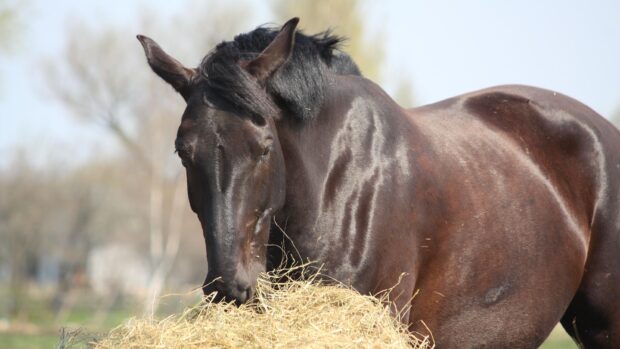The principle of good and bad bacteria has invaded our daily lives with the advent of health drinks such as Yakult. However, in both human and horse, methods of dietary support for “good bugs” vary considerably, and can be confusing.
The horse has principally evolved to digest fibre, and it has adapted to do this by playing host to trillions of micro-organisms within the gut. Most live in the hindgut, although they are also found in the small intestine.
The concept of friendly and unfriendly (pathogenic) bacteria comes from the idea that, as in any population, not everyone is on the same side. Good bacteria act to provide the optimum gut environment and to digest feed. Pathogens cause disease. The ill effects of that arch pathogen, salmonella, are widely known.
In reality, good and bad bacteria co-exist in the digestive tract all the time, and problems only occur when conditions allow pathogens to proliferate.
The digestive system is the first and most active line of defence against disease, usually caused by such pathogens taking hold. In a healthy animal, it is thought this is due to competitive exclusion, whereby the number of good bugs outnumbers the bad, preventing them from gaining hold.
A healthy horse fed a diet high in fibre will have a healthy digestive system and microbial balance. However, given the numbers of micro-organisms, it follows that anything that upsets digestion could alter this balance.
Stress caused by travelling, the demands of competition and frequent change may contribute to problems. Equally, internal stress due to overflow of undigested carbohydrate into the hindgut can dramatically disrupt the balance, which is particularly relevant for animals at risk of laminitis or those prone to tying-up.
Creating healthy insides
Fibre: Maximise fibre in the diet, particularly for competition horses and those at risk of diet-related conditions such as laminitis or tying-up. There are other ways to add fibre if grass or hay need to be limited.
Live yeasts: Used in feeds and supplements and thought to work primarily in the hindgut. Of all the micro-organisms on the market, only one, a yeast, has the necessary body of scientific evidence to prove it works in the horse and gain approval for use in feedstuffs by European legislators.
Probiotics: Mixed preparations of bacteria designed to boost “good bug” populations and crowd out disease-causing bacteria. They work principally in the small intestine.
Prebiotics: Not micro-organisms, these work to increase numbers of friendly bacteria. MOS (mannan oligosaccharides) bind to and remove “bad” bacteria. FOS (fructo-oligosaccharides) provide food for good bacteria in the small and large intestines.
|
||
 |
||


 Get up to 19 issues FREE
Get up to 19 issues FREE TO SUBSCRIBE
TO SUBSCRIBE 


